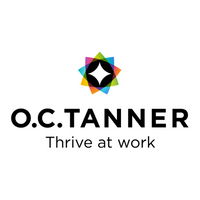How to build a consistent, transparent recognition strategy across multiple locations

No two organisations are the same. And while there are many different needs and approaches to consider with your recognition strategy, here are some of the common ways you can improve any recognition programme, not just at one location, but across multiple locations.
Connect your recognition strategy to your company values and purpose
Employees want to do work that matters. Recognition is a powerful way to connect an employee’s work to something bigger – to show employees how their work makes a difference to the organisation and to the world. As you identify what to recognise, think about the connections your employees can make to company values and your organisation’s purpose. An organic culture of appreciation happens when you align employee recognition to your organisation’s purpose, values and key objectives.
Appreciate the team as well as the individual. Appreciate everyday wins, as well as monumental achievements. Create a strategy that allows managers and employees alike to recognise significant effort, meaningful results, career milestones and company anniversaries.
Create consistent, equitable experiences
Inclusion and equity are vital to making recognition part of your culture. When employees see that appreciation is consistent and that all employees across every location, not just a few star players, are recognised, they’re more likely to feel engaged.
Recognition programmes must focus on making appreciation a reality for all employees, no matter where they are based, what team they’re on, what role they have, or to whom they report. Allow everyone to give and receive recognition, regardless of their level, department or location.
Train leaders to create great recognition experiences
Recognition should feel personal and genuine – for the giver, the recipient and everyone else witnessing the recognition moment. To achieve the most impact, recognition experiences should be meaningful for everyone involved. Recognition must not only be authentic, it must also meet the needs of the employees, which will mean tailoring recognition moments to suit employees’ needs and expectations. This will differ from one country to the next.
To achieve this, it’s important to train leaders on how to plan and create great recognition experiences. Set specific standards for what is expected of leaders – what should be recognised and how recognition should be given. Organisational leaders need to learn how to sincerely communicate and express appreciation for significant achievements as well as everyday effort.
Provide meaningful awards
Awards deliver experiences. The right awards are a crucial part of your overall recognition experience. Awards should not be one-size-fits-all. Instead, choose a variety of awards that fit the level of recognition being given and the expectations of employees from different countries. Thoughtfully consider the role of cash, gift cards, experiences, merchandise and custom awards. Don’t forget the impact of non-monetary recognition as well. Symbolic and custom awards are a great way to tell stories that connect recognition back to your company’s purpose, history, brand and culture. Above all, choose awards that are meaningful to your people. This means approaching appreciation with an understanding of what’s important and culturally relevant to each region.
Put recognition in the flow of work
Enable employees to recognise from anywhere without leaving their flow of work. Embed recognition tools into the apps and tools they use every day; Outlook, Salesforce, Slack or integrate your recognition data into existing tools like ADP and Workday. Incorporating tools into the flow of work makes it easier for your people to give and receive recognition.
Consider recognition delivery
When it comes to how you should deliver recognition, it’s vital to do your homework. Although the easiest way to engage with global employees is through online tools, this on its own is not enough as different cultures value different methods of communication. By knowing how staff prefer to receive recognition is fundamental to successfully and effectively reaching them.
Final thought
To truly change mindsets, make participation in the giving and receiving of recognition second nature, causing recognition to become a defining characteristic of your corporate culture. Socialising it far and wide can amplify and increase its impacts across all locations.
The author is Dan Phipps, culture and engagement strategist from O.C. Tanner Europe.
This article is provided by O.C. Tanner Europe.
Supplied by REBA Associate Member, O. C. Tanner
Giving teams the integrated tools they need when, where and how they need them.







